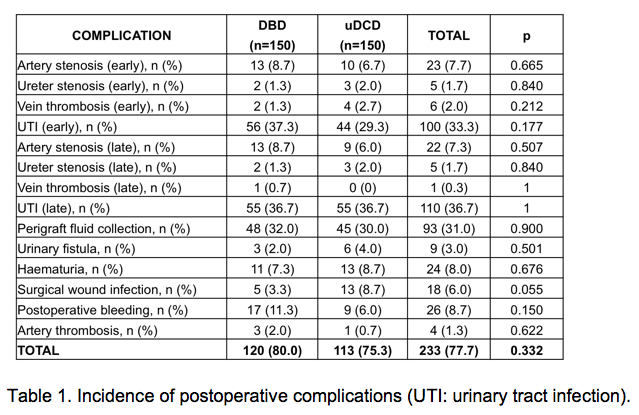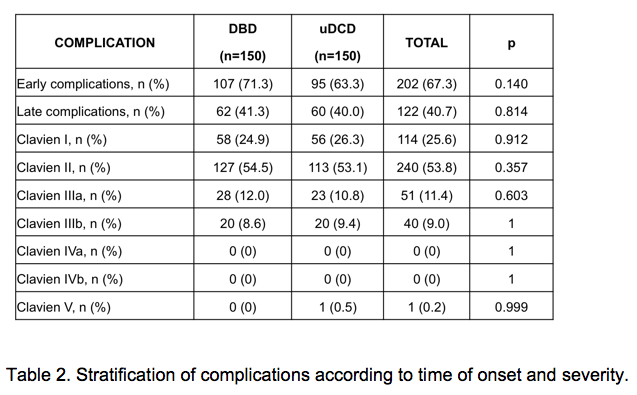Comparative Analyisis of Postoperative Complications after Kidney Transplantation: Uncontrolled DCD vs DBD Grafts, are they the Same?
Felix Guerrero-Ramos1, Teresa Cavero-Escribano2, Alfredo Rodriguez-Antolin1, Federico de la Rosa-Kehrmann1, Manuel Pamplona-Casamayor1, Jose Manuel Duarte-Ojeda1, Angel Tejido-Sanchez1, Felipe Villacampa-Auba1, Jose Medina-Polo1, Amado Andres-Belmonte2, Juan Passas-Martinez1.
1Urology, Hospital Universitario 12 de Octubre, Madrid, Spain; 2Nephrology, Hospital Universitario 12 de Octubre, Madrid, Spain
Introduction & Objectives: Kidney transplant (KT) is the best treatment for end-stage chronic kidney disease, with higher survival rates, better quality of life and lower economic burden than dialysis. Due to the large amount of people awaiting a KT there is a great organ shortage, which has led to investigate new sources of grafts. Donation after cardiac death (DCD) has emerged in the last two decades to increase the donor pool, classically composed by donation after brain death (DBD). Uncontrolled DCD (uDCD) is popular in scarce countries; these kidneys have a higher ischemic risk due to longer cold ischemia time, which can be related to a higher rate of postoperative complications, especially affecting the urinary reconstruction. Our aim is to compare the incidence of postoperative complications of uDCD transplants (with normothermic preservation prior to organ procurement) versus DBD transplants.
Methods: We carried out a retrospective review of 300 KT (150 uDCD with normothermic perfusion and 150 DBD) performed in our centre between 2007 and 2012 on recipients under 60 years old. We collected preoperative features, surgical technique, graft characteristics and postoperative complications. These complications were also stratified according to time of onset (early –during the first 90 postoperative days– versus late –after the 90th postoperative day–) and severity (based on Clavien-Dindo classification). Data were analysed using Stata v12.0 for Windows.
Results: Baseline characteristics were comparable, with a median follow-up of 53.6 months. Total postoperative complication rate was 77.7%. Comparative incidence of complications is presented in Table 1 and stratification is presented in Table 2.

Conclusions: Uncontrolled DCD kidneys under normothermic preservation have a rate of postoperative complications comparable to that of DBD kidneys, with no differences in time of onset or severity. We therefore believe that postoperative complications are not an obstacle when it comes to use DCD kidneys as a source of grafts to fight against organ shortage.
